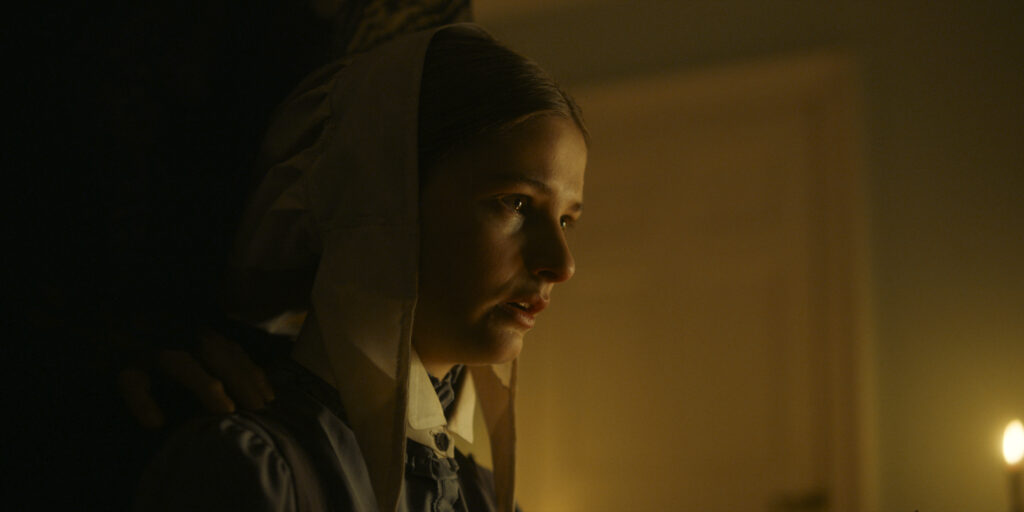I’m pretty much a broken record at this point from saying I’m not a huge fan of pre-1950s period pieces. The Devil’s Bath was a recent film that changed my mind about how I view period pieces, especially ones with a distinct message. For June, I wanted to take a wider look at LGBTQ+ representation and not just watch films that take place in a modern(ish) world. The Shudder Original The Last Thing Mary Saw could be the film to bring me out of my comfort zone and transport me to a world I would never know.
Exploring LGBTQ+ Representation in Historical Context
The Last Thing Mary Saw takes us to 1840s New York, where Mary (Stefanie Scott) finds herself on the opposite end of the law. Her family has been massacred, and she is the prime suspect. Mary’s life has been turbulent lately when word of her relationship with housemaid Eleanor (Isabelle Fuhrman) comes to light.
Love will always find a way, but the outcome may be far from what you expect.
Edoardo Vitaletti’s Directorial Debut
Writer/director Edoardo Vitaletti’s directorial feature debut is truly a sight to behold, pun intended. His approach to this film is one of care and respect. The film’s subject matter is incredibly distressing, and while not ‘based on…’, it feels all too authentic.
Mary and Eleanor are put through emotional and physical torture by those who vehemently disagree with their lifestyle. One thing I could never understand about religion is the hate that surrounds it. Luke 6:31, “treat others as you want to be treated.” Matthew 7:12, “So in everything, do to others what you would have them do to you.”
But the hate felt by nearly every marginalized community comes from the people who spend two hours on their knees for a zombie every Sunday.
A religious-like film such as Martyrs revels in its torture and uses it as a focal point to create a concise line between good and evil. Rather than making it a focal point, Vitaletti uses the pain and anguish of Mary and Eleanor to tell the heartbreaking story of two women who just want to be in love.
Standout Performances by Scott and Fuhrman
Stefanie Scott gives a chilling performance as Mary, but while not the titular character, Orphan’s Isabelle Fuhrman steals the show. Vitaletti struck gold on the casting for his debut as narry a performance falls flat.
It’s impressive to see a filmmaker with a singular short film under his belt pull such powerful performances out of actors while simultaneously never losing sight of their visual storytelling. Along with Black Friday cinematographer David Kruta, Vitaletti crafts a deliberate, atmospheric tale of love and loss.
A Gripe with Chapter Breakdowns in The Last Thing Mary Saw
My main issue with the film is something I’ve discussed before and is a pretty ridiculous gripe. Films that are less than one hour and 45 minutes should not be broken down into chapters. It strains a film’s pacing and puts the creatives in a box where they MUST hit certain beats to get to the end of said chapter.
There are some moments in the film where it does feel stretched out to accommodate its chapters, as well as times it feels a bit forced to end a chapter.
The Last Thing Mary Saw is a beautiful look at a time thankfully long gone. Well, there are still, unfortunately, a few too many people who think like the antagonists of this film. I’m not sure of the staying power a film like this has in the overall zeitgeist of the genre.
It doesn’t do enough to stand out as a powerful film, even though it’s visually gorgeous and has enough agency to feel effective in what it’s trying to say. This film is definitely not Friday night movie marathon material (it would put one hell of a damper on the night!), but the genre is in an overall better place because it exists.
